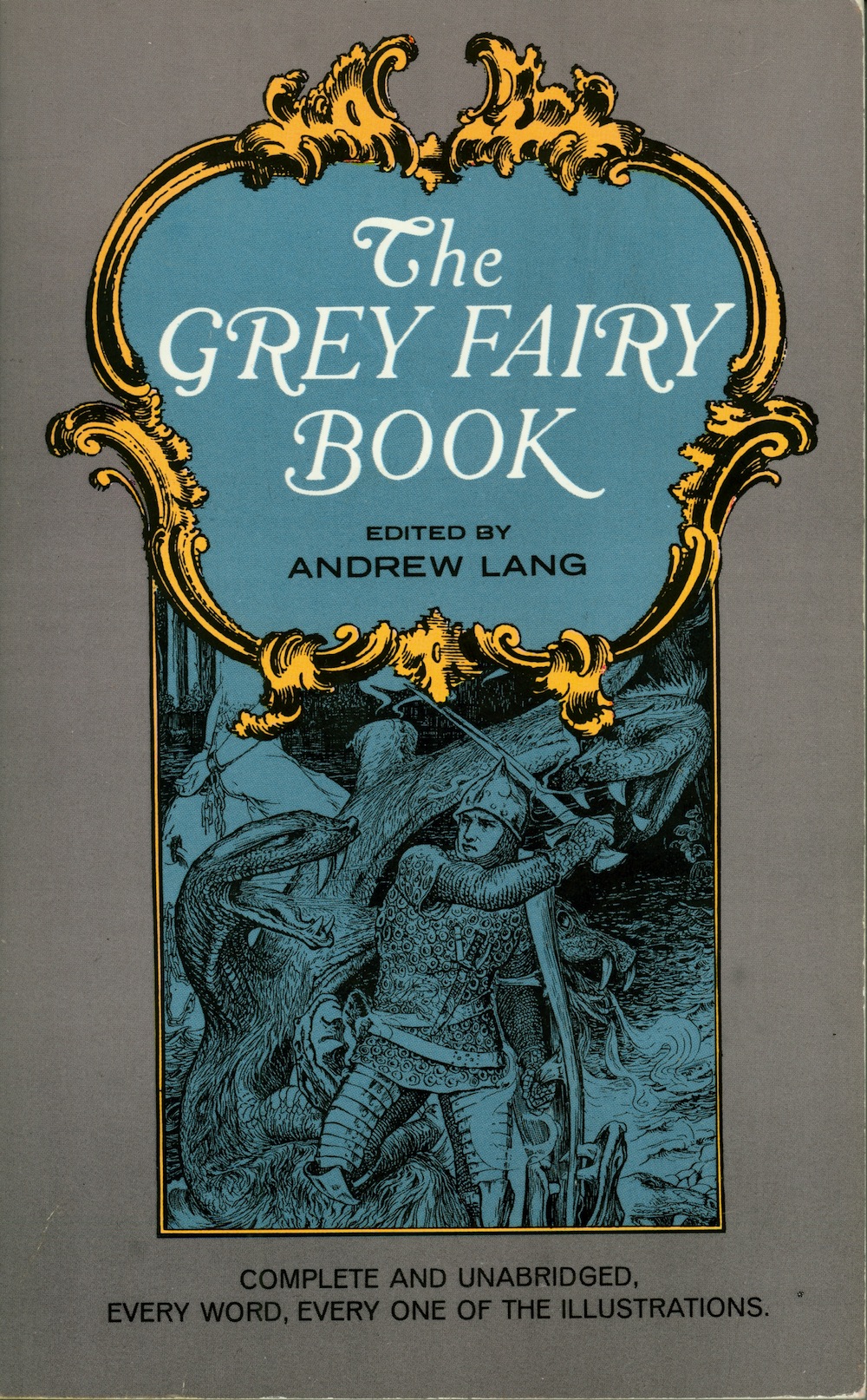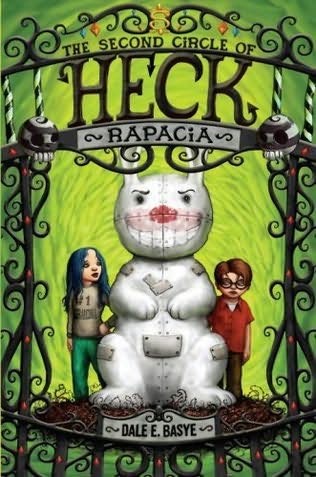Originally published in 1900, this book is part of Langs 12-book series of Fairy Books of Many Colors. It contains 35 stories from Lithuania, France, Greece, Libya, Italy, Poland, Serbia, Bohemia, Turkey, and other lands, translated and adapted by several gifted women in Langs circle of family and friends. It also boasts 59 exquisite illustrations by Henry Ford (the British one, not the American). Those who have followed the Many-Colored Fairy Book series to this point will appreciate what Lang says about the method of popular fiction in his brief preface:
A certain number of incidents are shaken into many varying combinations, like the fragments of coloured glass in the kaleidoscope. Probably the possible combinations, like possible musical combinations, are not unlimited in number…
…but, as Lang concludes, children will continue to delight in all their magical, adventure-filled varieties. The first story, Donkey Skin, illustrates Mr. Langs point, for it is similar in many ways to The Dirty Shepherdess from The Green Fairy Book, and is based on the same French tale as Robin McKinleys novel Deerskin. It tells of a princess who flees from her adopted father, the King, when he declares that he wants to marry her; later, disguised as a filthy servant girl, but armed with three magical dresses, she wins the heart of a handsome prince.
The Goblin Pony is an old wives tale to frighten children, showing why good children should listen to their grandmothers and stay indoors on Halloween.
An Impossible Enchantment tells the story of a wicked queen who is punished by the fairies, until she has a girl-child; then the punishment passes to her daughter. Isolated in a tower in the middle of the sea, guarded by fierce winds and sharks and other dangers, the Princess Graziella suffers the amorous attentions of a hideous merman, and the anguish of knowing that her curse will not be lifted until the impossible happensuntil she is in the arms of the man she loves.
The Story of Dschemil and Dschemila, from the land now known as Libya, is the passionately romantic story of a young man whose heart is broken when his true love is abducted by a man-eating ogre.
Janni and the Draken introduces us to one of several creatures I had never heard of before reading this book. I gather that Draken (sing. either Drakos or Draken) are some kind of goblin. In this story, a young man has the misfortune to have a sister who has fallen in love with one of the Draken. So sis lays a trap for the lad, sending him into increasingly deadly ambushes, where he is saved by his dogs and his own courage.
The Partnership of the Thief and the Liar is a humorous tale about how two rascals make their fortune.
Fortunatus and his Purse is a strangely uneventful story about a poor man who gains everything his heart desires, with the help of a magic purse and a magic cap. I suppose this fairy tale is instructive as an answer to the question, Why doesnt the hero do the smart thing? Why did he have to let this person get the better of him, or make that mistake, etc.? Well, heres your answer. When everything goes hunky-dory, you get a boring story.
The Goat-faced Girl is an Italian story illustrating the virtues of humility and gratitude. In this case, a pretty peasants daughter gets a shot at being queen, thanks to the patronage of a gigantic, but kindly, reptile. But her thanklessness earns her a terrible trial in which everyone but herself sees her wearing the head of a goat.
What came of picking Flowers is the Portuguese tale of a lad who delivers his three sisters from terrible curses. One of them loves a husband who must live in the form of a fish half of the time; the second girls husband spends half of his time as a bird; and the third is a terrible ogre who holds the key to breaking all the curses that bring misery to the three sisters.
The Story of Bensurdatu tells how a faithful servant descends into the nether realms to deliver three lost princesses from two giants and a seven-headed serpent. It reminds me somewhat of The Staff and the Fiddle from Pyles Wonder Clock.
The Magicians Horse is similar to The Horse Gullfaxi and the Sword Gunnföder from The Crimson Fairy Book.
The Little Gray Man, likewise, is very much like Pyles story of The Staff and the Fiddle. And I am honestly telling you that Lang spelled gray with an A in this story, though in the title of the book he spelled it with an E. Go figure!
Herr Lazarus and the Draken reintroduces the goblin-like characters that threatened Janni earlier in the book. This time, they get robbed blind by a clever rogue.
The Story of the Queen of the Flowery Isles is about a beautiful princess who, due to the jealousy of a witch queen, finds herself imprisoned in a strange garden under the earth.
Udea and her Seven Brothers is another strange but delightful Libyan tale, describing the adventures of a girl who goes to live with her seven older brothers. N-word advisory: you mast make allowances for the storys Arabic origin.
The White Wolf bears considerable resemblance to The Blue Bird in The Green Fairy Book. First a wolf successfully courts a kings daughter; then, when the wolf believes the girl has abandoned him and prepares to marry another woman, the princess wins his heart a second time.
Mohammed with the Magic Finger is the Libyan story of a lad who can see two days into the future, and how he makes his uncles fortune and his own.
Bobino tells the story of a son whose father considers him so worthless, that he tries to have him killed; but who escapes and becomes a king.
The Dog and the Sparrow go into partnership in this German tale, and when the dog is killed by a careless carter, the sparrow exacts a terrible revenge.
The Story of the Three Sons of Hali and The Story of the Fair Circassians is a connected pair of tales in the middle-eastern style, full of enough magic, romance, and intrigue to set your head spinning.
The Jackal and the Spring is an animal fable in which the tortoise proves to be a better watchman than either the rabbit or the hare.
The Bear is another story quite like Donkey Skin, in which a princess dances with the handsome prince three times before he asks for his handonly this time, she is disguised not as a serving wench dressed in animal skins, but as an actual bear!
The Sunchild introduces another bogey you may never have heard of: a lamia. This appears to be a kind of wicked witch, who tries to capture a little girl who lives with the sun, as she goes to visit her mother.
The Daughter of Buk Ettemsuch illustrates the saying, out of the frying pan, into the fire. She escapes from a witch who has eaten her six older sisters, only to become the servant of an ogre. I wont spoil it for you, except to add that it does involve a handsome prince.
Laughing Eye and Weeping Eye, or the Limping Fox is a Serbian twist on The Golden Mermaid, from The Green Fairy Book. In this one, a lame fox helps a foolish lad recover the magic vine that has been stolen from his father.
The Unlooked-for Prince is a Polish tale similar to King Kojata in The Green Fairy Book.
The Simpleton, one of my favorite stories, is a comical Italian tale, similar to the German legend on which the movie The Adventures of Baron Munchausen was based. In this version, a lad named Moscione, regarded by his father as a half-wit, makes a fortune and wins a princesss hand, with the aid of five superbly gifted companions. Their names, just for a taster, are Quick-as-Thought, Hares-ear, Hit-the-Point, Blow-Blast, and Strong-Back.
The Street Musicians are actually a donkey, a cat, a dog, and a cock who have joined up to escape from death when their masters decide they are of no further use. Useless they may be, but they manage to drive a gang of robbers out of their den!
The Twin Brothers is a tale we have seen before, both as Pyles The Knights of the Fish and as The Golden Lads in The Green Fairy Book.
Cannetella is an Italian princess who learns the hard way that it is not wise for a princess to make it hard for her father to find her a husband.
The Ogre forms an unlikely friendship with a foolish youth named Antonio, who gets into the same sort of trouble as Father Grumbler in The Brown Fairy Book. The repetition is easily forgiven, because the illustration of the ogre is so funny!
A Fairys Blunder is another forerunner of G. C. Levines Ella Enchanted, in which a fountain that turns old people into children and youngsters into adults, proves to have deadly side effects. Its latest victims are a pair of beautiful young lovers favored by a wiser fairy. But undoing another fairys magic isnt as easy as it sounds!
The Bohemian tale of Long, Broad, and Quickeye portrays a son who rescues a damsel from an evil magician, with the aid of three more superbly gifted companions. Hmm. Thats a useful phrase.
And finally, Prunella escapes from the deadly malice of a witch, with the help of a flagon of oil, a loaf of bread, a rope, a broom, and the love of the witchs handsome son. Which is interesting, really, since usually its the man in the story who is obliged to do three impossible tasks, and the witchs (or ogres, or magicians, etc.) daughter who helps him do them.
As you have seen from these brief summaries, a lot of the stories in The Grey Fairy Book turn up in other collections, including the other-colored Fairy Books. But I agree with what Lang said in his preface. If you enjoy fairy tales at all, you wont mind hearing occasional variations of the same ones. After all, familiarity adds to their enjoyment, and the differences make for an element of the unexpected. Expect this, though: some spanking good stories, full of magic, love, danger, and humor.


